
Choosing Bathtubs: Cast Iron or Acrylic?
Last Updated: Mar 20, 2025Nothing can quite match the ultimate relaxation of sinking into a bathtub filled to the brim with hot water and fragrant bubbles. Whether you’re the kind of person who enjoys a regular soak or wants a new bathtub to complete your bathroom's aesthetics makes a BIG difference in the tub you choose. One of the very first choices you’ll have to make before heading out to buy your new bathtub is which material is suitable for you. Here, we look at two of the most popular bathtub materials: cast iron and acrylic.
Why it Matters
A bathtub is a long-term purchase, serving as the place to bathe new babies, scrub down squirming toddlers, soak a sore back, and relax after a hard day’s work. Just like your bed, a bathtub is not the place to skimp if you plan to do more than look at the tub.
As you weigh your options in acrylic and cast iron bathtubs, it’s essential to consider your values. Do you care about the long-term durability of the tub? Does it matter how the material was sourced and from where it comes? To start, we think it’s essential to keep the lifetime durability and maintenance needs and upfront costs of the tub itself and any shipping and installation required.
Table of Contents
- What Is an Acrylic Bathtub?
- What Are the Pros of Acrylic Bathtubs?
- How Much Do Acrylic Bathtubs Cost?
- What Are the Cons of Acrylic Bathtubs?
- What Is a Cast Iron Bathtub?
- What Are the Pros of Cast Iron Tubs?
- What Are the Cons of Cast Iron Tubs?
- How Much Do Cast Iron Tubs Cost?
- So, Which Bathtub is Right for Me?
What Is an Acrylic Bathtub?
Not to be confused with fiberglass-reinforced plastic, acrylic bathtubs are built from synthetic materials and are available in a wide variety of styles, colors, and options like seats, handles, underwater lighting, jets, etc.

What Are the Pros of Acrylic Bathtubs?
A new acrylic bathtub can weigh in at as little as 50 pounds. The minimal weight of these bathtubs makes them cheaper to ship and very easy to install. They also put a lot less strain on your flooring and home structure, making them a more natural solution for bathrooms on the upper levels of a home.
Because acrylic bathtubs are mass-produced in factories, they come standard with various options, including shape and size. If you’d like a bathtub with a seat, steps, shower combo, headrest, armrests, underwater lighting, or even cup holders, an acrylic tub is probably your best option. Acrylic is also the cheapest option if you have your heart set on jets or whirlpool features.
Among the many available acrylic bathtubs, accessibility may be the most important as we age or if anyone in your household lives with a disability. You’ll find many options in acrylic bathtubs with walk-in access and handles for ease of use.
How Much Do Acrylic Bathtubs Cost?
Acrylic tubs are by far the less expensive option when buying a new bath. You can buy a basic, budget bathtub for as little as $258 for a 60” rectangular tube from Lowe’s. A stylish freestanding soaker style runs a little more at $800+, and luxurious jetted bathtubs start around $900. If you’re most interested in optional seats, jets, or have a limited budget, an acrylic bathtub might be what you want.
What Are the Cons of Acrylic Bathtubs?
Acrylic bathtubs are built strong but at only ¼” thick, inexpensive acrylic options can be flimsy and prone to damage. The tub must be installed and maintained correctly to avoid common problems like cracking and warping. These tubs are also prone to staining, so they must be gently cleaned. Avoid abrasive chemical cleaners and rough scrubbing tools like steel wool. Because of the limited durability, acrylic bathtubs will probably need to be replaced sooner than a cast iron bathtub.
Acrylic bathtubs are warm to the touch and much more relaxing to jump right into while the water fills up, especially compared to their cast iron cousins. However, acrylic doesn’t have nearly the heat insulation that cast iron does. Your hot bath water will cool more quickly, especially on a cold day. If you take short baths or intend the tub for bathing children, this may not be a con on your list. If you enjoy long, luxurious baths, you may want to splurge on a tub that retains heat longer.
What Is a Cast Iron Bathtub?
Cast iron bathtubs are primarily sought after for their long-term durability and unique vintage look. These tubs start as hot, liquid iron poured into molds and cooled to harden into a bathtub that will last several generations. Once cooled, cast iron bathtubs are usually coated with enamel and fire-polished for a smooth and ageless finish.

What Are the Pros of Cast Iron Tubs?
If you’re looking for a bathtub that will stand the test of time, look no further than cast iron. These bathtubs are built about 3/8” thick and so durable you’ll never have to rebuy another bathtub. Their superior durability holds up, staying strong against beatings that would otherwise leave dents, dings, and scratches.
In addition to being the last bathtub you’ll ever buy, new cast iron tubs often contain up to 80% recycled materials, furthering their durable properties. You can find a beautiful vintage cast iron bathtub, second hand, that is 100% recycled because they last generations.
Unlike acrylic bathtubs, cast iron won’t stain, scratch, or ding. All they need is a gentle cleaning with a cloth to maintain their timeless look year after year. Cast iron bathtubs are an excellent choice for a uniquely designed bathroom and the best option for high-traffic washrooms. If regular houseguests frequent your guest bathroom, or if your home only has one bathtub, cast iron tubs are certainly the most durable.
While a cast iron bathtub is cool to the touch, heat from hot running water quickly transfers to the iron, warming the whole tub. That means your hot bath will stay hot much longer than in an acrylic bathtub, absolutely ideal for long, luxurious soaks.
Bathroom
Shop bathroom and water fixtures that help you save money while keeping your health in mind.
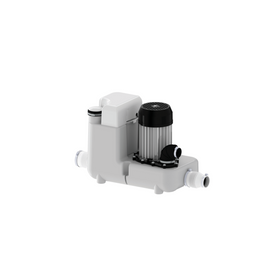
Saniflo 018 Sanicom 1 Heavy-Duty Drain Pump
Saniflo
In Stock
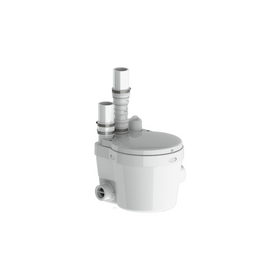
Saniflo 021 Saniswift Drain Pump
Saniflo
In Stock
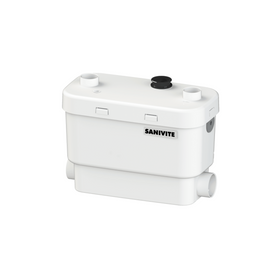
Saniflo 008 Sanivite Drain Pump
Saniflo
In Stock
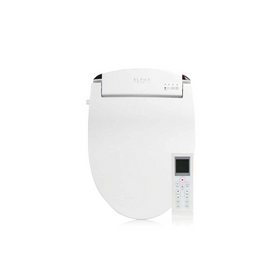
Alpha Bidet Alpha JX Bidet Seat
Alpha Bidet
In Stock
2 Colors
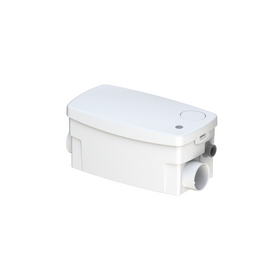
Saniflo 010 Sanishower Drain Pump
Saniflo
In Stock

Brondell Swash BL97 Advanced Bidet Toilet Seat with Remote Control
Brondell
In Stock

BidetMate 2000 Series Electronic Smart Toilet Seat
BidetMate
Out of Stock

BidetMate 6000 Series Smart Bidet Toilet with Remote
BidetMate
In Stock

ICO Calma Cavalli Gloss White Vessel Sink B8711
ICO Bath
In Stock

PULSE ShowerSpas Oasis Shower System – 1053
PULSE ShowerSpas
In Stock
2 Colors
What Are the Cons of Cast Iron Tubs?
Cast iron bathtubs are built to last and weigh in at 300 pounds or more without water. You can estimate 8.3 pounds per gallon of water added to fill the tub, plus your weight as you climb in. That all adds up to a great deal of weight!
If you have your heart set on cast iron, keep in mind that drop-in and apron-style bathtubs have a larger frame that distributes the tub and water weight over a broader area. Clawfoot tubs focus all that weight on four much smaller points.
Before you settle on a cast iron bathtub, have a professional check the stability of your flooring and house structure to ensure it can withstand the weight of the tub plus water. Keep in mind that weight also attributes to more expensive shipping costs and the requirement of more than one person needed to move and install the tub. You should consider this if you’re looking for a tub for a bathroom that’s higher than the ground floor.
Unlike acrylic, cast iron bathtubs come in significantly fewer styles, shapes, and options. At this point, there doesn’t seem to be anycast iron bathtubs inaccessible and walk-in styles. Newer cast iron bathtub models offer jets and handles, but they are much more expensive than acrylic counterparts.
How Much Do Cast Iron Tubs Cost?
Cast iron tubs are sturdy, durable and come at a higher upfront price. New cast iron bathtubs can cost as low as $400. It can also range as high as $2,500 for stylish clawfoot tubs, with a median cost of $1,500; luxurious jetted tubs run upwards of $3,500.
If you enjoy a long, hot soak and are prepared to splurge on the last bathtub you’ll ever buy, cast iron might be the perfect choice for you.
So, Which Bathtub is Right for Me?
When you’re remodeling your bathroom, it’s essential to consider not only the cost but also how long you plan to live in your home. If you’re planning to move soon, investing in a more expensive cast iron bathtub may not make sense (unless you plan to take it with you).
Keep in mind more oversized bathtubs require more water to fill. If you enjoy a regular bath, a more massive tub will undoubtedly impact both your water and water heating bills. And most importantly, before you settle on the absolute best bathtub, make sure you measure your bathroom and doorways to ensure the tub will fit.
Laura Bourland
Laura grew up in the California suburbs, far removed from environmentalism, but nature always has a way. She uprooted her life in 2015, moving to the countryside of Washington to live a more sustainable and simple life on 12 acres. She and her fiancee are learning on the job as they attempt everything from gardening and natural pest control to eco-friendly building and home improvement.
